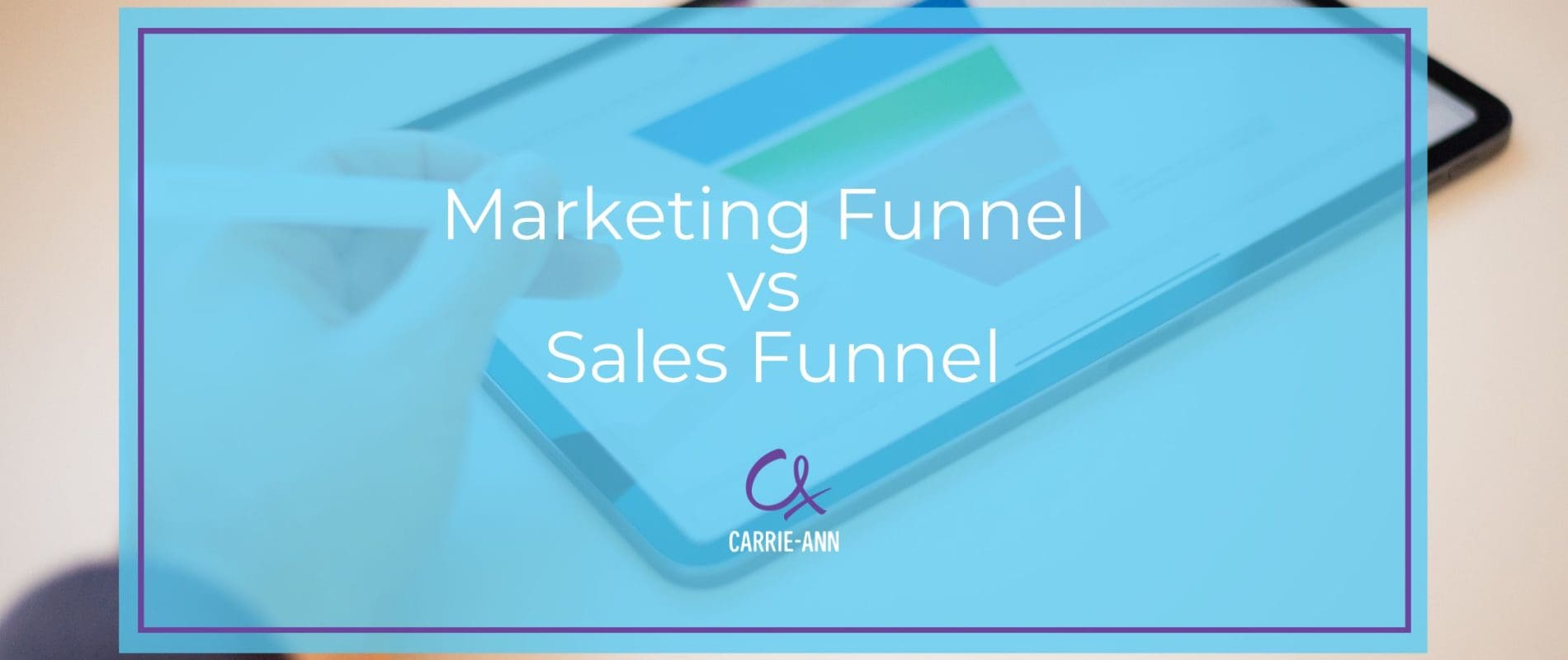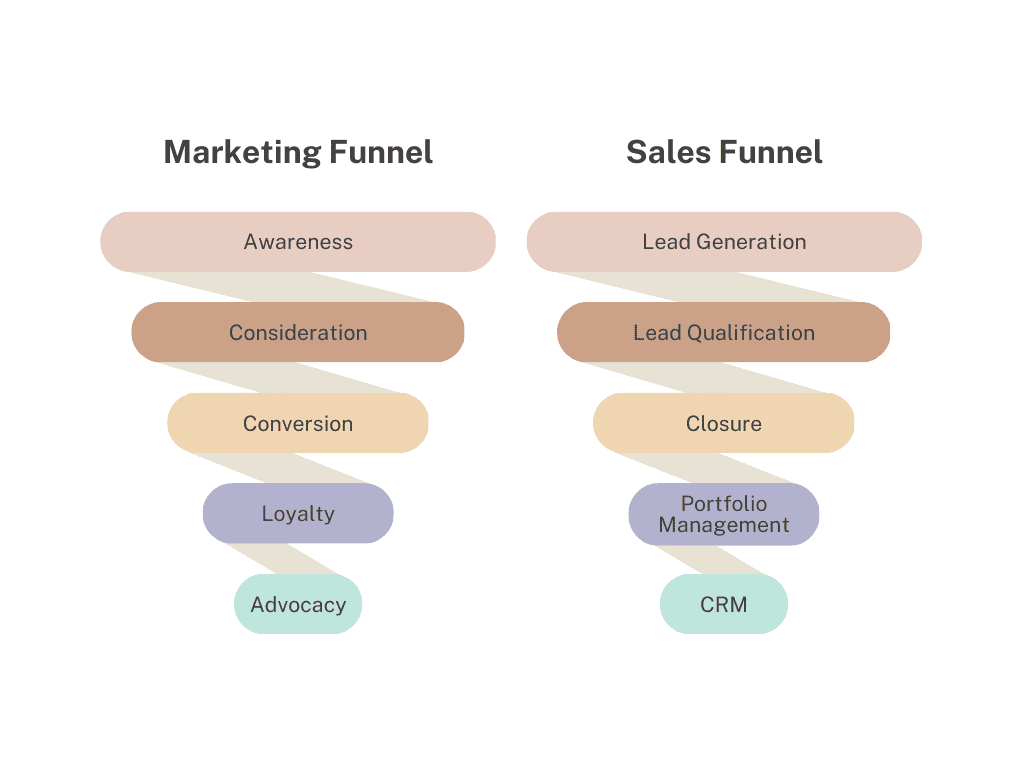
The difference between a marketing funnel and a sales funnel
A marketing funnel is a visual representation of the customer journey from awareness to purchase. Having something visual will allow you as the business owner to clearly see what is needed to make a conversion.
Many people think that marketing campaigns alone are enough to solve immediate sales problems but it’s not, unfortunately. Unless you lay out a marketing funnel and regularly check the data at every point, you will not achieve your goals.
The difference between a marketing funnel and a sales funnel is simple.
A marketing funnel advertises products or services to give leads a reason to buy. The sales funnel deals with the leads (that came from the marketing funnel).

Marketing without data is like driving with your eyes closed
Your marketing funnel provides a lot of data. If you have data, then you can make informed decisions that will improve the customer experience and help them move through the funnel easier.
I love data, it can answer every question you have such as which ads work, why customers leave the site, and so on.
Still with me?
A marketing funnel is designed to move prospects closer to the final goal of converting them into paying customers. The most common stages of a marketing funnel include:
- Awareness:
At the top of the funnel, prospects are introduced to your brand, product, or service for the first time. The aim is to create awareness and generate interest in what your business has to offer. This is why I always ask clients to double-check what metrics are important to them. Likes and followers for example on social media will not suddenly send customers to step 4 (conversion) so if that is the only metric you are measuring you will run out of budget and be very unhappy.
- Interest:
As prospects move down the funnel, they start to research and learn more about your product or service. The aim is to arouse interest and provide helpful information that will help prospects make an informed decision. Remarketing ads and emails are great here. A chance to really resonate with your audience. If you are using SEO then really informative landing pages are needed.
- Consideration:
At this stage, prospects have shown interest in your product or service and are considering making a purchase. The aim is to address any objections, build trust, and provide enough value to encourage prospects to commit to the purchase. I always find the tiniest of things that stop big conversions such as unclear returns policies, lack of price clarity, and even too many product variations.
- Conversion:
This is the final stage of the funnel, where prospects become paying customers. The aim is to make the purchase process as seamless and easy as possible while providing a delightful customer experience that will encourage repeat business and referrals.
I advise you to put together a marketing funnel or at the very least a customer journey plan before you start any marketing campaigns. If you need any help, get in touch.